|
|
|
Michigan Tech
Articles of Interest |
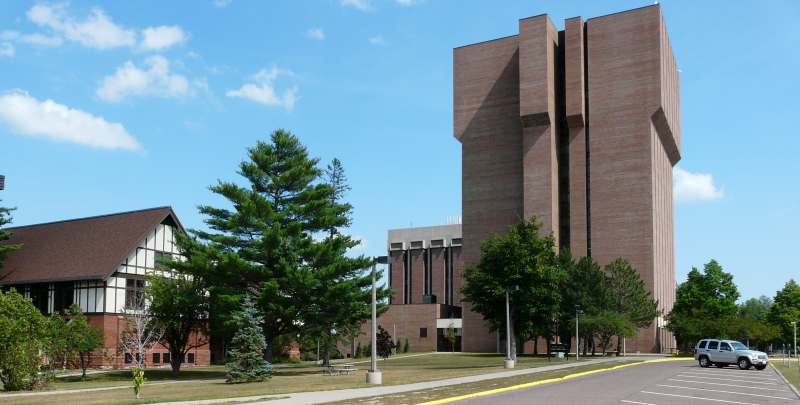 |
|
Can Snowmobiles Adapt
in the Age of Ethanol?
|
by Marcia
Goodrich,
senior writer |
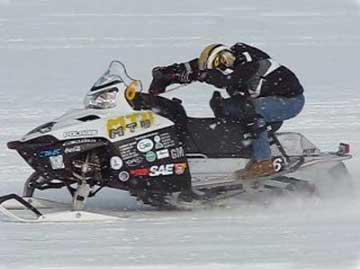 |
Houghton January 5, 2010
By 2022, federal regulations will require a 400-percent increase
in the amount of renewable fuel in America's gasoline, from 9
billion to 36 billion gallons.
Cars and trucks are being designed to run on these ethanol-rich
fuels. But can a snowmobile?
"Now, the maximum amount of ethanol in most fuel is 10 percent,
or E10," says Scott Miers, an assistant professor of mechanical
engineering-engineering mechanics. "What if it goes to E15? How
will that affect snowmobiling?"
For the owners of the 1.7 million snow machines registered in
the US, it's a serious question. Miers will begin to answer it
this winter. He will test snowmobile emissions and fuel economy
on E15 fuel, both in the lab and on the trail. He will also
study how well snowmobiles start at low temperatures on the
higher-ethanol blend. "If you can't start in the cold, you can't
snowmobile," Miers noted.
The research will be conducted in cooperation with the SAE Clean
Snowmobile Challenge, hosted annually by Michigan Tech and set
for March 15-20.
The Clean Snowmobile Challenge is a collegiate design
competition of the Society of Automotive Engineers. Engineering
students from participating schools take a stock snowmobile and
reengineer it to reduce emissions and noise while maintaining or
boosting performance. In 2009, teams adapted their engines to
run on flex-fuel, with varying ratios of ethanol and gasoline.
"This study is a great fit for the Challenge," said Jay Meldrum,
who co-organizes the event as executive director of the Keweenaw
Research Center. "The snowmobiling community is wondering what
will happen if ethanol increases to E15 or E20."
The $69,000 project is funded in part by a $25,000 grant
provided by the Bureau of Energy Systems, part of the Michigan
Department of Energy, Labor and Economic Growth. Gage Products
of Ferndale is providing fuel, and Yamaha is donating a
snowmobile. Emissions testing equipment will be provided by the
Clean Snowmobile Challenge.
Coprincipal investigators on the project are Meldrum and Jason
Blough, associate professor of mechanical
engineering–engineering mechanics.
|
| Tech Receives Kennedy Center Honors |
|
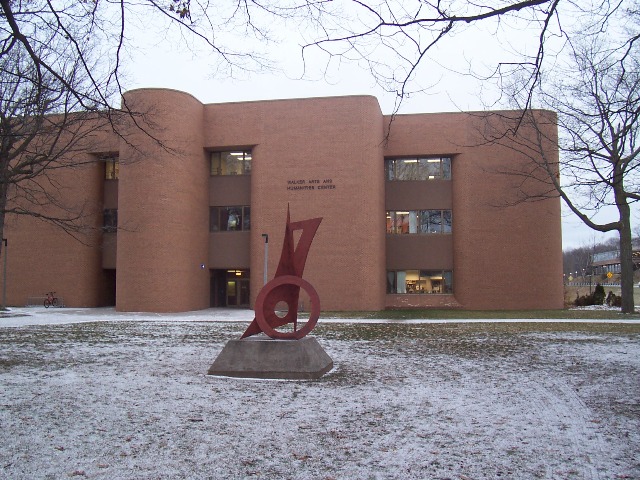 |
| VPA Plays Receive Kennedy Center/ACTF honor by Dennis
Walikainen, senior editor
The two one-act plays recently produced by the visual and
performing arts department--"The Bald Soprano" and "The
Lesson"--have been selected to be performed at the Kennedy
Center/American College Theatre Festival. The Region III
festival will be held at Saginaw Valley State University from
Jan. 5 to 9.
The two Eugene Ionesco plays were evaluated along with all
other plays entered since January of this year in the four-state
region of Michigan, Wisconsin, Illinois and Indiana. They
selected the most outstanding eight performances of the year to
be presented at the January festival.
"It's immensely unusual for a school with the resources of
Michigan Tech to be able to compete in the marketplace with the
finest schools in the Midwest," said Roger Held, chair of VPA.
"Region III is the largest of the eight KC/ACTF regions. To have
a production selected for performance at the annual festival is
very difficult, because the competition is intense."
Since the announcement early this month, the actors,
designers, and crew members had to immediately go back into
rehearsals, redesigning them to be moved to a 550-seat
proscenium theatre at Saginaw Valley State.
In announcing the awards, the KC/ACTF selection committee
cited director Patricia Helsel's creative interpretation of the
Ionesco plays and her unique stylistic choices, as well as
"outstanding production values and use of technology,"
particularly the play's use of projections, and its scenic,
sound and lighting designs.
Forty students from Michigan Tech were already scheduled to
attend the Region III festival in January to compete for awards
in several categories, from acting to sound and costume design.
They'll now be joined by the casts and crews of the plays, which
will be fully staged in the new venue, with strict limits on the
amount of time allowed for setting the stage and all the
technical aspects of the play.
Helsel, assistant professor of theatre, joined Michigan
Tech's faculty in 2006 and has directed several plays, including
the spring 2009 musical, "The Robber Bridegroom." Set designer
Brock Nummerdor, lighting designer Frank Sopjes, costume
designers Simone Boicourt and Esther Chuah, sound designer David
Nichols and stage manager Mike McKeller, plus the crew and eight
of the nine actors, are Michigan Tech undergraduates.
|
| |
| MSU trustees give authorization to proceed with art
museum construction |
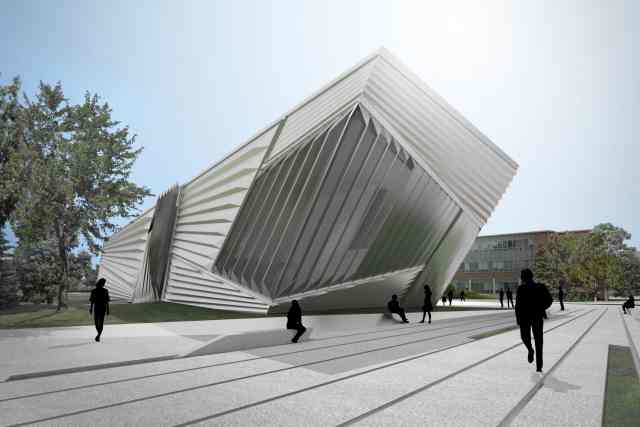 |
EAST LANSING, Mich. — Authorization to proceed with the construction
of the Eli and Edythe Broad Art Museum has been approved by the Michigan
State University Board of Trustees at its Dec. 11 meeting.
The university will break ground on the museum on March 16, 2010. Eli
Broad, who donated the naming gift for the project, and Zaha Hadid, the
internationally known architect who designed the building, are expected
to attend.
The groundbreaking will be followed by 23 months of construction and a
2012 museum opening.
In June 2007, philanthropist and MSU alumnus Eli Broad and his wife,
Edythe, donated $18.5 million toward the construction of the museum.
They gave an additional $7.5 million to commission a signature sculpture
and to provide funding for acquisitions, operations and endowment for a
total gift of $26 million, the largest gift ever made to the university.
Hadid, a prize-winning architect from London, was selected as the winner
of an international design competition for the Broad Art Museum in
January 2008. Teams from Hadid’s firm worked with university
representatives as well as local architectural and construction firms to
complete the design and building plans.
For more information about the Broad Museum, visit
www.broadmuseum.msu.edu.
|
| |
| MTU Receives Funding For
Forest Health |
|
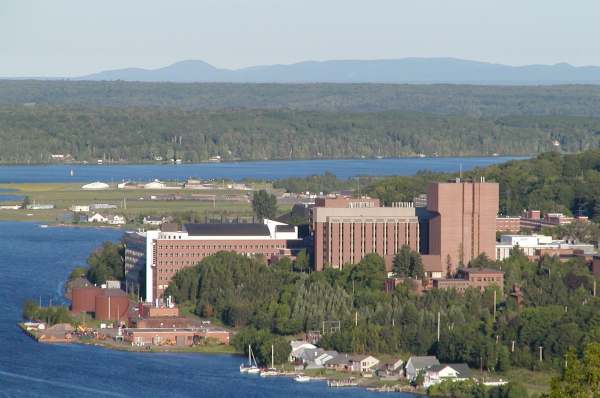 |
| Houghton - December 12, 2009 New Funding - Andrew
Storer (SFRES) has received $651,539 from the USDA Forest Service
for a multiple-year project, "Forest Health Cooperative."
Yu Wang (MSE/IEM) has received $69,008 from the National Science
Foundation for the first increment of a potential two-year, $207,008
project, "Computational Study for Optimizating Microstructures and
Properties of Polymer-Matrix Magnetostrictive Composite Materials."
|
| |
|
Former Husky Berger
Starts at Center for
NFL's Miami Dolphins |
|
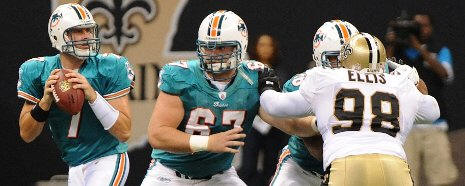 |
December 9, 2009
Former Michigan Tech football player Joe Berger started his
first career game in the National Football League on Nov. 29.
The Newaygo, Mich., native, who played for the Huskies from
2001-04, started at center for the Miami Dolphins in their game
at the Buffalo Bills.
Berger was an All-American and Academic All-American in his
time at Tech. The former Great Lakes Intercollegiate Athletic
Conference Offensive Lineman of the Year was drafted by the
Carolina Panthers in 2005. He was signed by the Dolphins from
the Carolina practice squad prior to the 2005 season and spent a
season and a half with in Miami before being claimed off waivers
by the Dallas Cowboys in 2006. Following the 2008 season, Berger
was re-signed by Miami to a multi-year contract as an
unrestricted free agent.
Until the Nov. 29 game, Berger had spent his career as a
backup on the offensive line. Because of an ankle injury to
starting center Jake Grove, Berger got his chance to start.
Dolphins coach Tony Sparano was quoted in a Miami Herald
feature story on Berger that ran before the game as saying, “If
Joe ends up starting in the game, and Jake doesn’t play, then
I’m absolutely fine with that.”
“Joe’s ready to go, got a lot of work,” he said. “He’s a
solid player, smart guy, going to get us lined up the right way,
and I know exactly what Joe will do in the game. I think that
that’s a good thing.”
The feature story on Berger from the Miami Herald can
be found at the following link.
http://www.miamiherald.com/sports/football/story/1354872.html
Michigan Technological University (mtu.edu)
is a leading public research university developing new
technologies and preparing students to create the future for a
prosperous and sustainable world. Michigan Tech offers more than
130 undergraduate and graduate degree programs in engineering;
forest resources; computing; technology; business; economics;
natural, physical and environmental sciences; arts; humanities;
and social sciences.
Original URL:
http://www.mtu.edu/news/stories/2009/december/story20905.html
|
| |
|
Tech's
Wallace Wins Fulbright Scholarship to Chile |
|
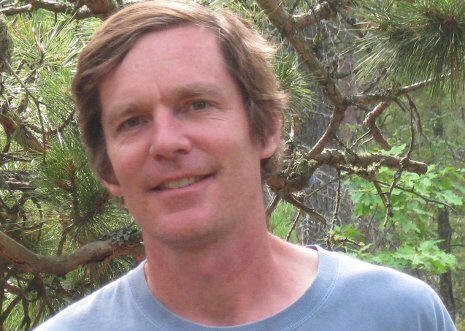 |
| December 10, 2009 Charles Wallace, associate professor of computer
science, has been named a Fulbright Scholar. He will spend six
months teaching and conducting research at the Pontificia
Universidad Catolica in Santiago, Chile.
The highly competitive Fulbright Program is the flagship
international exchange program sponsored by the US government.
It is designed to increase mutual understanding between the
people of the US and other countries.
Wallace's research interest is in software engineering,
particularly the challenges of communicating about software.
The full story about the
Fulbright winner is
online. |
| |
| Student-Athletes Collect Winter Hats
and Gloves for Charity |
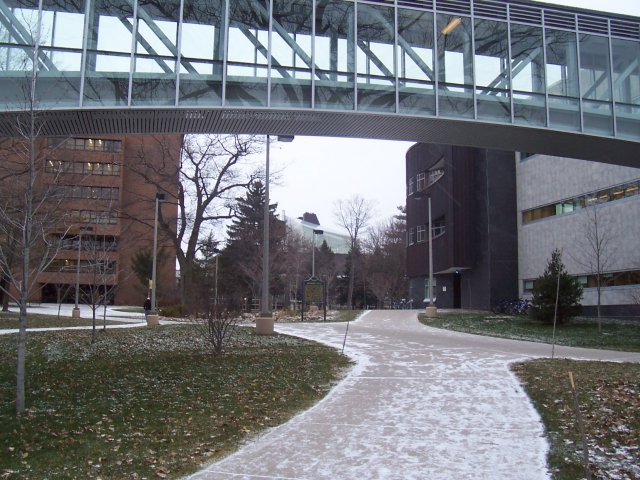 |
Michigan Tech Athletics is partnering with Houghton
Rotary to collect winter hats, gloves and mittens to donate to
local charities. At the next three home athletic events, members
of Tech's Student-Athlete Advisory Council (SAAC) will have bins
for people to make donations.
Those contributing items at an event will be entered into that
day's drawing for a $50 gift certificate to University Images.
The items should be new or nearly and of all sizes, for children
and adults.
SAAC president Beth Geerer, a member of the women's track and
field team, is helping to coordinate the program. "We wanted to
come up with a way for athletics to give back to the community,"
she said. "Having people donate winter hats, gloves and mittens
seemed appropriate for our climate."
The dates and times for donations are below.
* Saturday, Dec. 5--basketball vs. Northwood (women's at 1 p.m.,
men's at 3 p.m.)
* Friday, Dec. 11--hockey vs. Minnesota, 7:07 p.m.
* Saturday, Dec. 12--Hockey vs. Minnesota, 7:07 p.m.
|
| |
|
"Messiah" Will Put the Campus, Community in the Holiday Mood
|
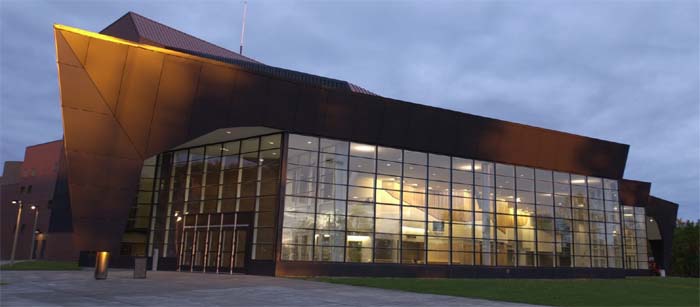 |
by Dennis Walikainen, senior
editor
On the night of the first full rehearsal of "Messiah," two
student Concert Choir members and I fought the cold wind as we
found the stage entrance of the Rozsa Center.
They were going to warm up their voices; I was going to warm up.
Seeing members of the Keweenaw Symphony Orchestra (KSO) in their
street clothes was a bit shocking, but when they ran through
sections of Handel's "Messiah," they transported the few of us
watching to another place. A good place.
The trumpets sang out high and true and were complemented by
violins and then cellos to round out the bass.
"Since 1741, this music's never been out of vogue," new director
Joel Neves told the performers. "Think about that when you hit
that first note." The orchestra responded.
As they pursued perfection on another section, Neves talked
about the "stop and pop," and if you listened closely, you could
hear Handel's influence on modern music.
They sounded more polished as they proceeded, and, in one spot,
to get them to better understand the music, he had them sing
their parts. The orchestra became a sonic engine. "Now that's
rhythm," Neves said, as the music enveloped the Rozsa.
One observer noted how young the musicians were, and when the
Concert Choir joined them, it became a nice mix of hair, some
grey, some long.
When both groups were assembled, Neves discussed his goal of the
performance: "We want to breathe fresh air into it," he said,
making sure it is not too heavy. When the soloists, and then the
full choir, joined in, his lightness was achieved, but still
possessed the power of the music. The harpsichord and organ
helped.
"I know it's the holidays and finals are coming up, but I want
us all to put everything we’ve got into this," he said.
Judging by this rehearsal, the KSO and Concert Choir are doing
just that--taking on the masterpiece.
We asked Neves about the task of tackling this monumental piece.
"Whenever an orchestra and choir perform a masterwork on the
scale of Handel's 'Messiah,' it is a massive undertaking," he
said. "There's the choir, there's the orchestra, there's the
collaboration with four vocal soloists, there's the addition of
a harpsichordist and organist, there's the almost forty separate
musical movements that need to be coordinated: it's a real party
when this musical behemoth joins together on stage!"
He said that one of the challenges involves the choir and
soloists rehearsing for several months, but with only three
joint rehearsals before the concert. When they finally do get
together, it can be "a real challenge to make a cohesive
product."
"There needs to be really good communication and, most
importantly, a sense of humor about it all," he said. "It's
really a miracle that everything comes together so nicely at the
concert. (Knock on wood!)"
And why did we choose to perform "Messiah" for this season?
"The KSO and Concert Choir have traditionally performed
"Messiah" once every four or five years, and this production
meets that expectation," Neves said. This way, it prevents
overexposure, he added. "It needs to seem like a brand-new
composition, something that is fresh and appealing, not a
musical albatross forced upon everyone each Christmas season."
He noted that the main reason why the KSO ("and every other
community and professional orchestra in the western hemisphere")
performs "Messiah" so frequently is, the quality of the music
"that seems to awaken the most elevated feelings in the human
soul.
"How many compositions written 265 years ago can be hummed by
virtually every person on the planet today? Will we still be
talking about "Sergeant Pepper’s Lonely Hearts Club Band" or
"Stairway to Heaven" or "I've Got Friends in Low Places" in the
year 2274? I can't say. But I do know that Handel's canny
compositional craft and spiritual sense makes his 'Messiah' one
of those rare experiences where an audience member walks away
both emotionally charged and spiritually enlightened."
"Messiah" will be performed at 7:30 p.m., Saturday, Dec. 5, in
the Rozsa Center. |
| |
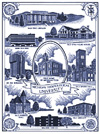 |
Buy Your
Michigan Tech Blanket Now! |
Order the Michigan Tech blanket as a
unique gift for friends, students, and alumni. Images of our rich
architectural heritage, past and present, are woven in beautiful shades
of blue. Wrap up in this warm and decorative memento of Michigan Tech!
The blanket
- is a generous 4 feet by 5 feet.
- is woven in the USA of 100% cotton (machine
washable).
- is adorned with images of buildings on
campus, past and present.
Yours for only $65!
The blanket is a fund-raising project of the
Friends of the Van Pelt Library, and all proceeds go to projects for
Michigan Tech's J. Robert Van Pelt and Opie Library.
Order your blanket
Return to Friends of the Library Home Page
Return to J.
Robert Van Pelt and Opie Library Home Page
|
Beckwith Honored with Gallery
at Central Michigan |
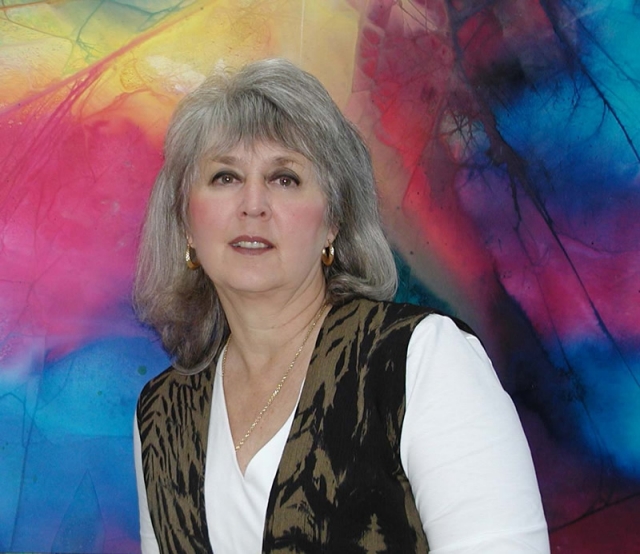 |
| by Dennis Walikainen, senior editor
Houghton - November 28, 2009
Mary Ann Beckwith, professor of art in the visual and performing
arts department, has had an art gallery named in her honor, thanks to a
donation of artwork from Arlee Tampas, a Central Michigan University
alumna, and Pete Tampas, former faculty member in the School of
Technology.
The Mary Ann Beckwith Gallery, in the new Education and Health Services
building on the Central Michigan campus, is so named "because of all she
has taught me and others about papers, artists, techniques," said Arlee.
"And she shares her knowledge so freely with everyone in the community."
The gallery is actually located in a hallway, and that was on purpose,
according to Arlee. "The windows along the 110-foot hallway give natural
light and actually open up on a computer lab across the way, so even
more people can enjoy the art," Arlee said. The gallery will focus on
local and regional artists, including an exhibit of Beckwith's work, for
all of spring semester 2010.
"It really struck me out of the blue, and I am extremely honored,"
Beckwith said. "I’ve never dreamed of this happening to me. It really
goes along with my belief that art should be part of everyday life."
Kathy Koch, interim dean of the College of Education and Health
Services, also appreciates the utilitarian display of artwork.
"Having the gallery in our new building is a perfect way to communicate
with our students and the community at large that learning is more than
what happens in the classroom," she said. "The gallery exhibitions
expose students to new ways of thinking about the world around them, and
we hope it will stimulate their own creativity as they prepare for
future careers and becoming informed citizens."
The first exhibit, "Dream of a Landscape," features Jens Carstensen,
whose work is heavily influenced by the Michigamme area of the UP,
according to a news release from Central Michigan.
The staff in the education and health services is also pleased with the
"casual and serendipitous gallery" and the artwork.
"The gallery helps soften the very industrial steel, glass, bamboo, and
slate of the new building," said Anne Miller, coordinator of outreach
and marketing for the college. "The south-facing windows lend themselves
to a gallery, and we can fit some 25 or so paintings. We look at it as a
platform for outreach, too. We would like to do an on-campus art walk,
for example."
Miller was impressed with the talent of, and her talks with, Beckwith.
"She seems remarkable," Miller said. "She’s a true superstar."
Although the gallery opened this fall, the grand opening will be on
Saturday, Mar. 20, so Beckwith can visit.
The Beckwith Gallery is open Monday through Friday, 7 a.m. to 10 p.m.,
and Saturday, 8 a.m. to 5 p.m. The venue is handicapped- accessible. For
additional information, call 989-774-7528 visit
www.cmich.edu/ehs
.
|
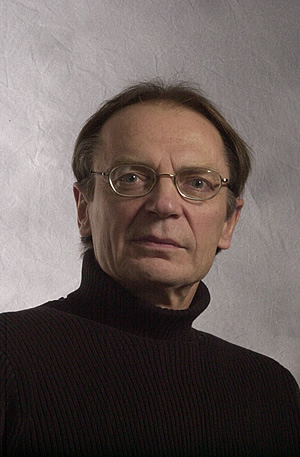 |
MTU Physicist
Produces Digital Art |
by John Gagnon, promotional writer
Houghton - November 28, 2009
We visited the Vertin Gallery in Calumet this week and discovered that
Max Seel, a disciplined scientist and a structured administrator, has a
fanciful side.
Seel takes pictures and manipulates them with design software. The
results are engaging and comprise an exhibit, which runs through Dec. 2,
at the gallery.
Picture this:
A pig with a soup can for a snout.
A Duesenberg with fenders like wings.
Martini glasses like so many bubbles in the air.
From flowers to casinos, these are what Seel calls "digital realities."
"Take a piece of reality and make something different," he says. "Make a
new world."
Seel committed to the show a year ago, when he stepped down as a dean
and returned to the faculty and had more time to devote to the
avocation. He enjoys this work but is uncomfortable with the attention.
We prevailed on him to talk about it; he did so grudgingly.
Seel has been doing this work for about seven years. He starts with a
simple camera and a snapshot. "You get nicer pictures if you buy a
postcard," he says. Then he gives the pictures a heavy dose of whimsy.
"See what happens," Seel says. "Sometimes it never works out and I just
give up. Other times you see something working. Each result is almost
unique."
He has no set schedule with this work. It's a rainy afternoon deal.
Where does this endeavor come from in a physicist?
"Oh, to be a good scientist, you need to be creative," he says. "You
need to have ideas. You need to be playful, I think."
There’s no message with this business. "Absolutely not," he says.
He describes the process as a translation. "Take reality, translate it,
make art of it. It becomes a different reality."
When it comes to translations, he's an old hand, for he likes to read
them. He is schooled in his native German, as well as Latin, Greek,
French and English. He can still recite Virgil's Aeneid in Latin, which
he learned in his boarding school days.
An artistic bent is not new territory for Seel. He played cello in the
Keweenaw Symphony Orchestra for 20 years. Science and music go hand in
hand, he says. They share "structure and creativity."
Seel also paints with oil. He describes that work as "mainly copying"
and allows, "I'm not good enough and I don't have time enough." But he
enjoys it. "You smell the mess. You smell the paints and the turpentine.
It's very different from digital."
Making his digital compositions is diverting. "It takes your mind off
everything else."
Artist, scientist, scholar, and musician: Are they the makings of a
Renaissance man?
"I don’t think so," Seel says. "No. It’s just fun."
|
|
Artist Eydi Lampasona
|
|
to
Visit MTU Campus |
submitted by Visual and Performing Arts
Eydi Lampasona, an award-winning artist specializing in watermedia,
papermaking and collage using natural and found objects, will present a
Guest Artist Residency at Tech from Wednesday, Dec. 2, through Saturday,
Dec. 5. She will present four two-hour lecture demonstrations titled,
"Urban Archeology: Collage and Mixed Media," in the McArdle Theatre at 2
and 7 p.m., Wednesday, Dec. 2, and 10 a.m. and 2 p.m., Thursday, Dec. 3.
Her current work involves collage techniques such as altering, rusting,
making opulent papers and investigating unusual assemblage materials,
including found and salvaged objects and natural objects. Lampasona
combines media as she applies layering, glazing, painting, texturing and
other three-dimensional methods. "My goal is to unleash each student's
creativity," Lampasona says. "Students from beginners to professionals
enjoy learning news ways to experiment, creating works based on their
life experiences, personal themes and goals."
Mary Ann Beckwith, professor of art and coordinator of the annual Guest
Artist Residency, says "Eydi is an astonishingly gifted artist and
teacher."
Lampasona is a signature member of the National Watercolor Society,
National Collage Society, International Society of Experimental Artists
and Society of Layerists in Multi-Media. Her work can be viewed at
eydilampasona.com .
In addition to the free public lectures, Lampasona will present a
two-day workshop for artists--limited to 20 persons--on Friday and
Saturday, Dec. 4 and 5. Preregistration and a fee are required for the
two-day session. Enroll by calling the Visual and Performing Arts Office
at 487-2067 or by submitting the registration form at:
www.vpa.mtu.edu . For more information, contact
Beckwith at 487-3285. |
| |
| State
Moves Ahead with |
| Great
Lakes Research Center |
|
|
| by Jennifer Donovan, director of public
relations Houghton - November 16, 2009
The Michigan Legislature's Joint
Capital Outlay Committee meeting in Lansing
Thursday authorized Michigan Tech to seek
construction bids for its planned Great
Lakes Research Center (GLRC).
The $25.3-million facility will be built
on the waterfront adjacent to the campus.
The state will pay 74 percent of the cost.
The University's share is 26 percent or
$6.58 million.
"As Michigan moves toward a blue-water
economy, this Great Lakes Research Center
will play a vital role in helping the state
understand and use its freshwater
resources," said President Glenn Mroz. "It
is a strategic investment in the future, for
the state and for the University."
The GLRC will include aquatic
laboratories, a hydraulics lab, coastal
research instrumentation, boathouse
facilities, offices and conference
rooms--all of it providing a home for
interdisciplinary research and education
related to the Great Lakes. It will also
house a research and educational partnership
between Michigan Tech and the US Army Corps
of Engineers' Research and Development
Center Environmental Laboratory in
Vicksburg, Miss. The Vicksburg lab is the
Corps of Engineers' water resources research
facility.
At the GLRC, Michigan Tech and the Corps
of Engineers will conduct cross-disciplinary
research and education focusing on
protection and restoration of the Great
Lakes. Vicksburg scientists will work
collaboratively with Michigan Tech
researchers and students in both locations.
"We are appreciative of the strong,
continuing support of Sen. Michael Prusi and
Rep. Michael Lahti," said Dale Tahtinen,
vice president for governmental affairs.
"They played a significant role in making
this happen."
The Board of Control will now be asked to
authorize the seeking of construction bids
for the 49,466-square-foot center, based on
a schematic design already approved by the
state. Groundbreaking could occur in spring
2010. |
|
Rozsa Center Welcomes
|
|
Virtuoso Simon
Shaheen
|
| |
submitted by the Rozsa
Center
The Rozsa Center presents the
internationally-acclaimed and
Grammy-nominated instrumentalist
Simon Shaheen, at 7:30 p.m.,
Wednesday, Nov. 18. Shaheen is one
of the most significant Arab
musicians, performers and composers
of his generation. His work
incorporates and reflects a legacy
of Arabic music while it forges
ahead to new frontiers, embracing
many different styles in the
process. Shaheen dazzles his
listeners as he deftly leaps from
traditional Arabic sounds to jazz
and Western classical styles. His
soaring technique, melodic ingenuity
and unparalleled grace have earned
him international acclaim as a
virtuoso on the 'oud and violin.
A Palestinian born in the Israeli
village of Tarshiha in the Galilee,
Shaheen's childhood was steeped in
music. His father, Hikmat Shaheen,
was a professor of music and a
master 'oud player. "Learning to
play on the 'oud from my father was
the most powerful influence in my
musical life," Shaheen recalls. He
began playing on the 'oud at the age
of five and a year later was
studying violin at the Conservatory
for Western Classical Music in
Jerusalem. "When I held and played
these instruments, they felt like an
extension of my arms."
|
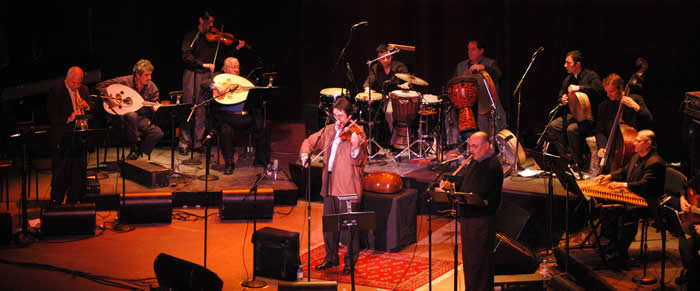 |
Most recently, Shaheen has
focused much of his energies on
Qantara. The band, whose name means
"arch" in Arabic, brings to life
Shaheen's vision for the unbridled
fusion of Arab, jazz, western
classical and Latin American
music--a perfect alchemy for music
to transcend the boundaries of genre
and geography. The group's release,
"Blue Flame," earned eleven Grammy
nominations and high accaim by the
Los Angeles Times as "stunning" and
"meticulously conceived."
While Qantara has been the focus of
Shaheen's recent attention, he
continues to lead the Near Eastern
Music Ensemble which remains active
performing more traditional concerts
in museums and art centers and
participates in Shaheen's Arab Music
Retreat. This year, Shaheen directed
the multi-faceted orchestral program
Aswat (Voices)--Celebrating the
Golden Age of Arab Music and Cinema,
in association with the John F.
Kennedy Center for the Performing
Arts and the University Musical
Society at the University of
Michigan.
A retrospective program of Shaheen's
contemporary and traditional Arab
music styles is offered in his most
available North American touring
format--a five-piece ensemble of
master musicians. Shaheen also tours
as a solo artist internationally and
as a lecturer throughout the
academic world promoting awareness
of Arab music through numerous
workshops and presentations.
This event is sponsored by the James
and Margaret Black Endowment.
Ticket prices for the general public
are $20 and $15; for Tech students
$15 and $10 (student ID required).
To purchase tickets, contact the
Rozsa Box Office at 487-3200, the
Central Ticket Office at 487-2073,
Tech Express at 487-3308 or visit
tickets.mtu.edu .
No refunds, exchanges or late
seating. |
|
|
IronwoodInfo.com
is a Michigan, Non-Profit Media Corporation
|
|
Contact
IronwoodInfo.com
|
|
email:
mail@ironwoodinfo.com
snail mail: P.O. Box 305 Ironwood, MI 49938
Telephone
906-885-5683
Fax
906-884-2544
|
| |
|
|












